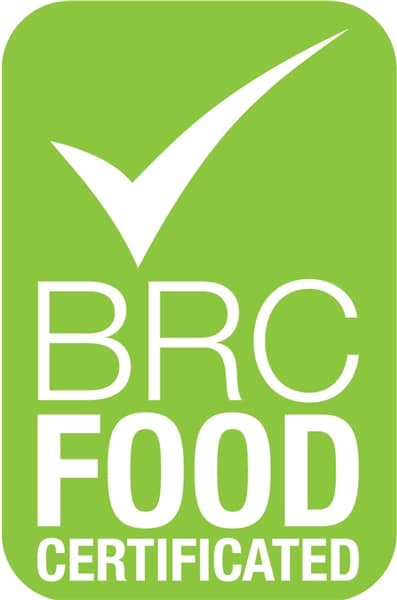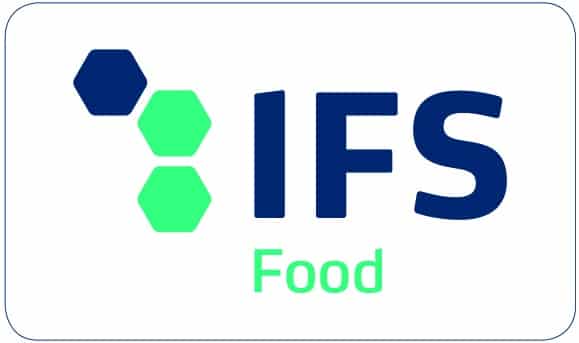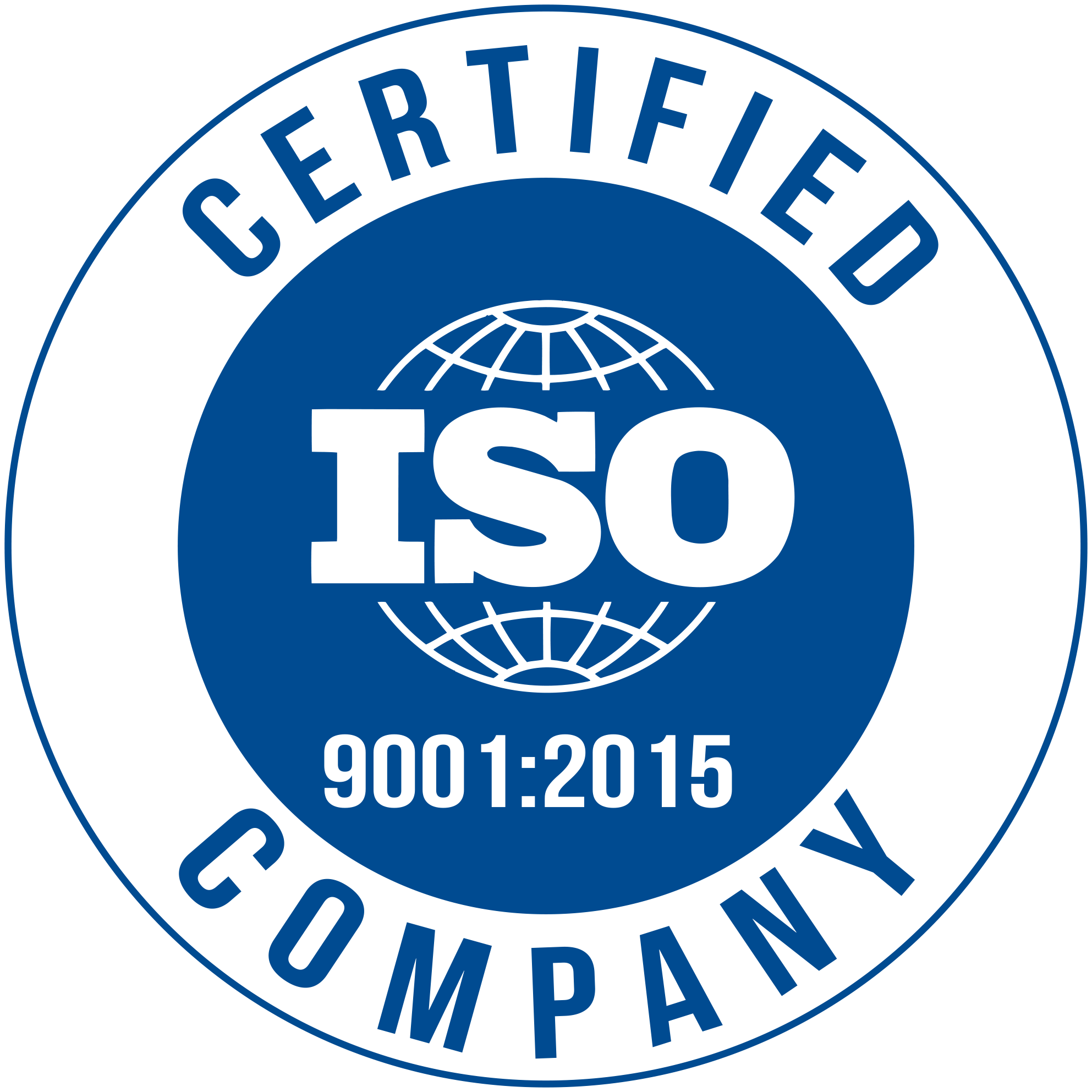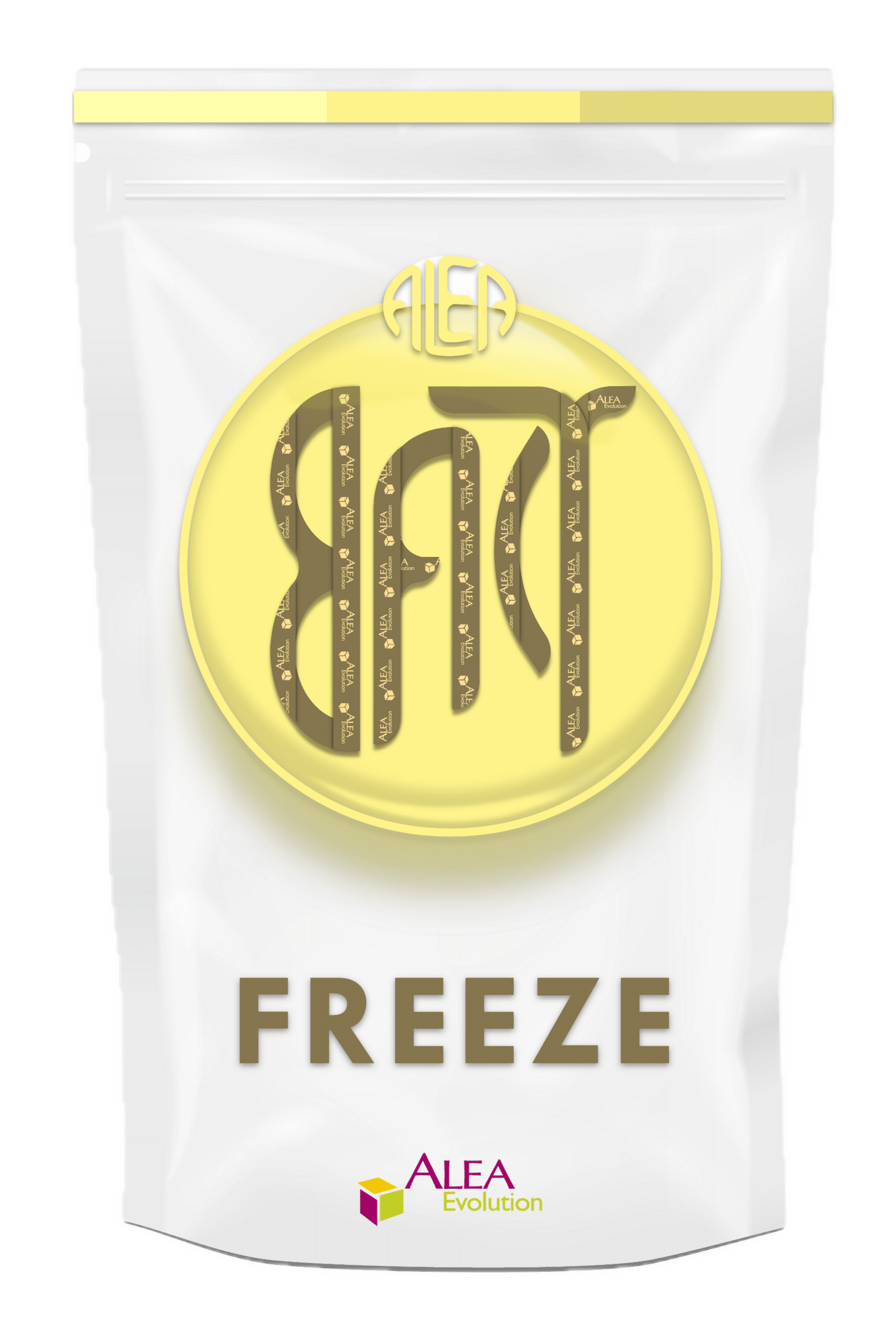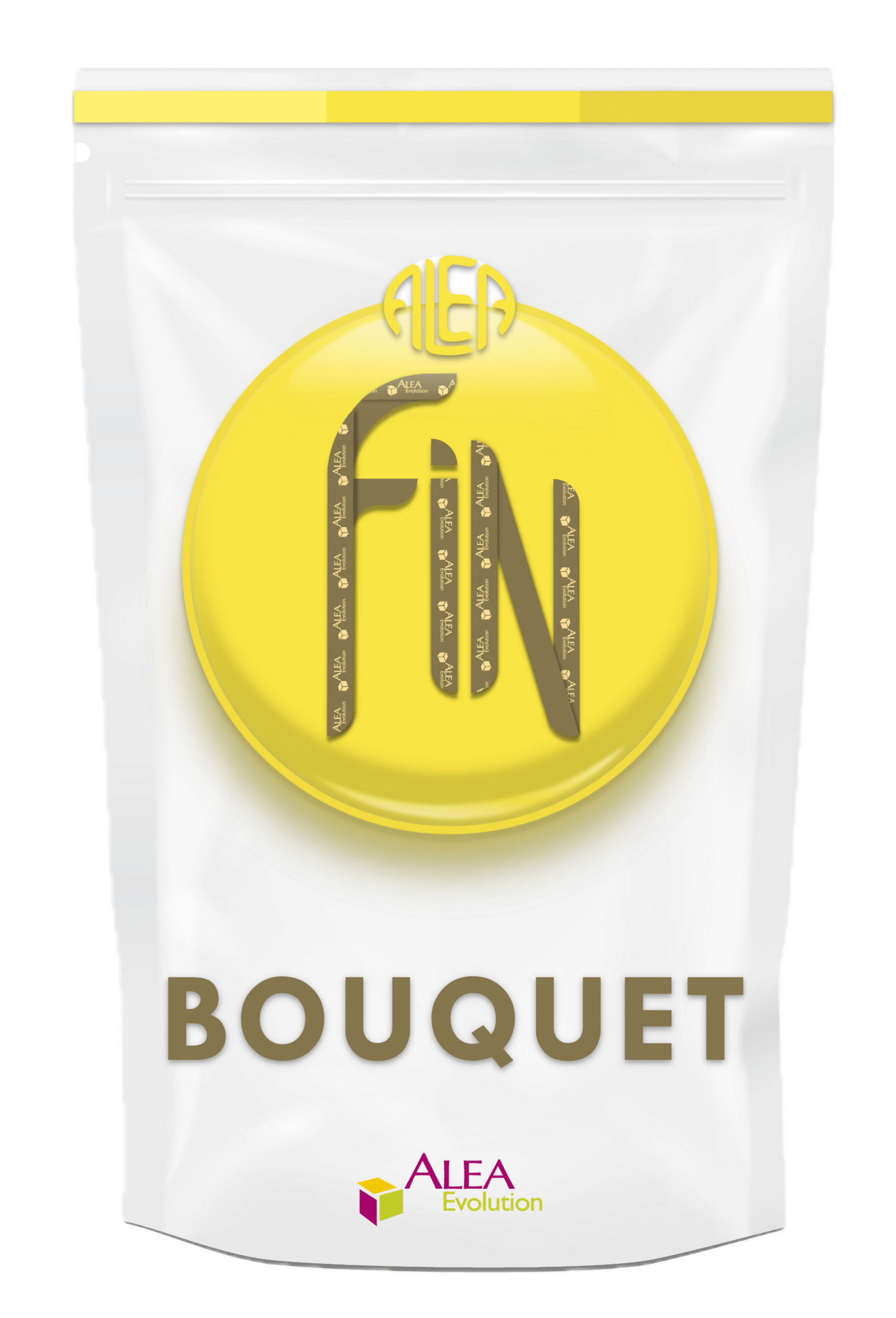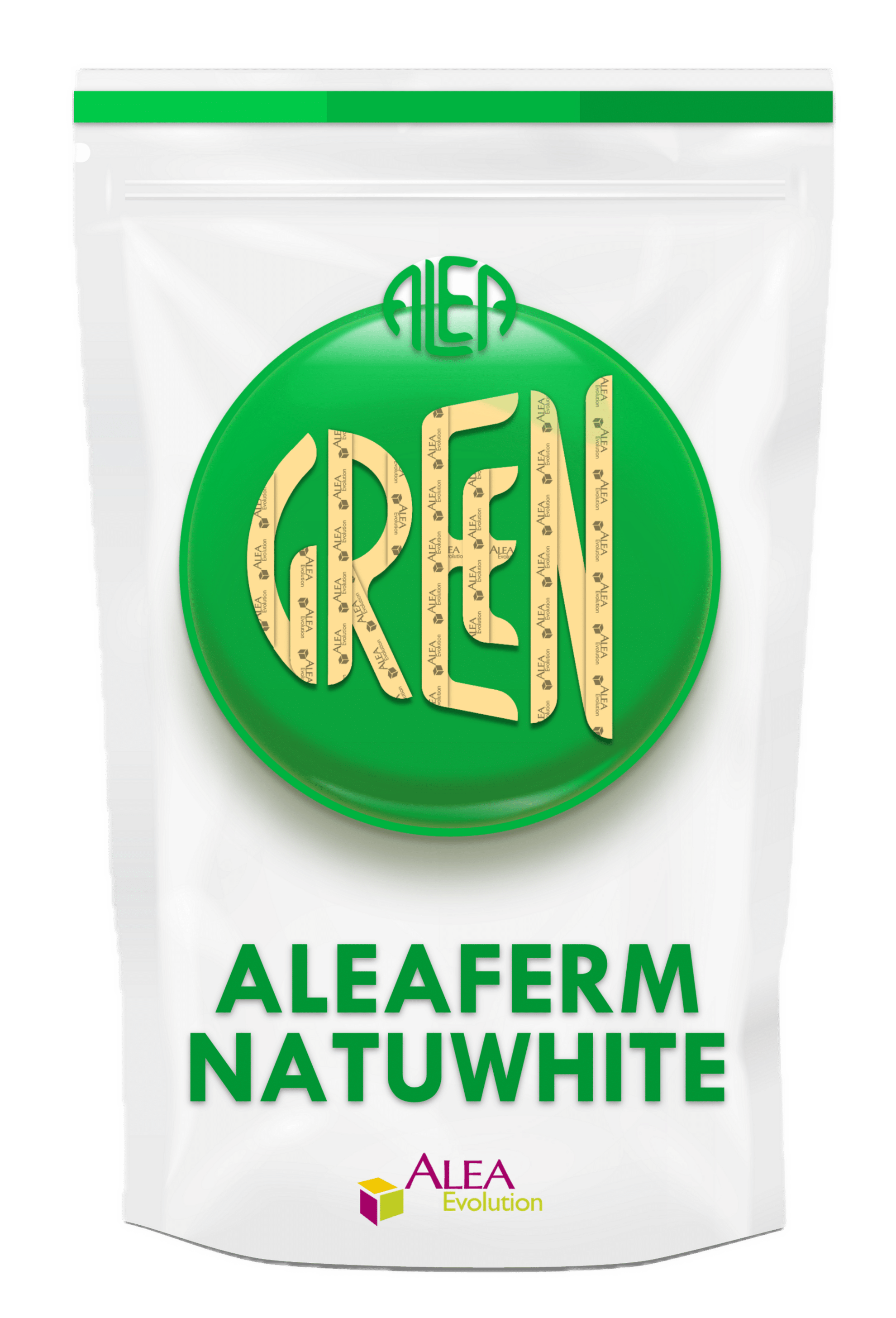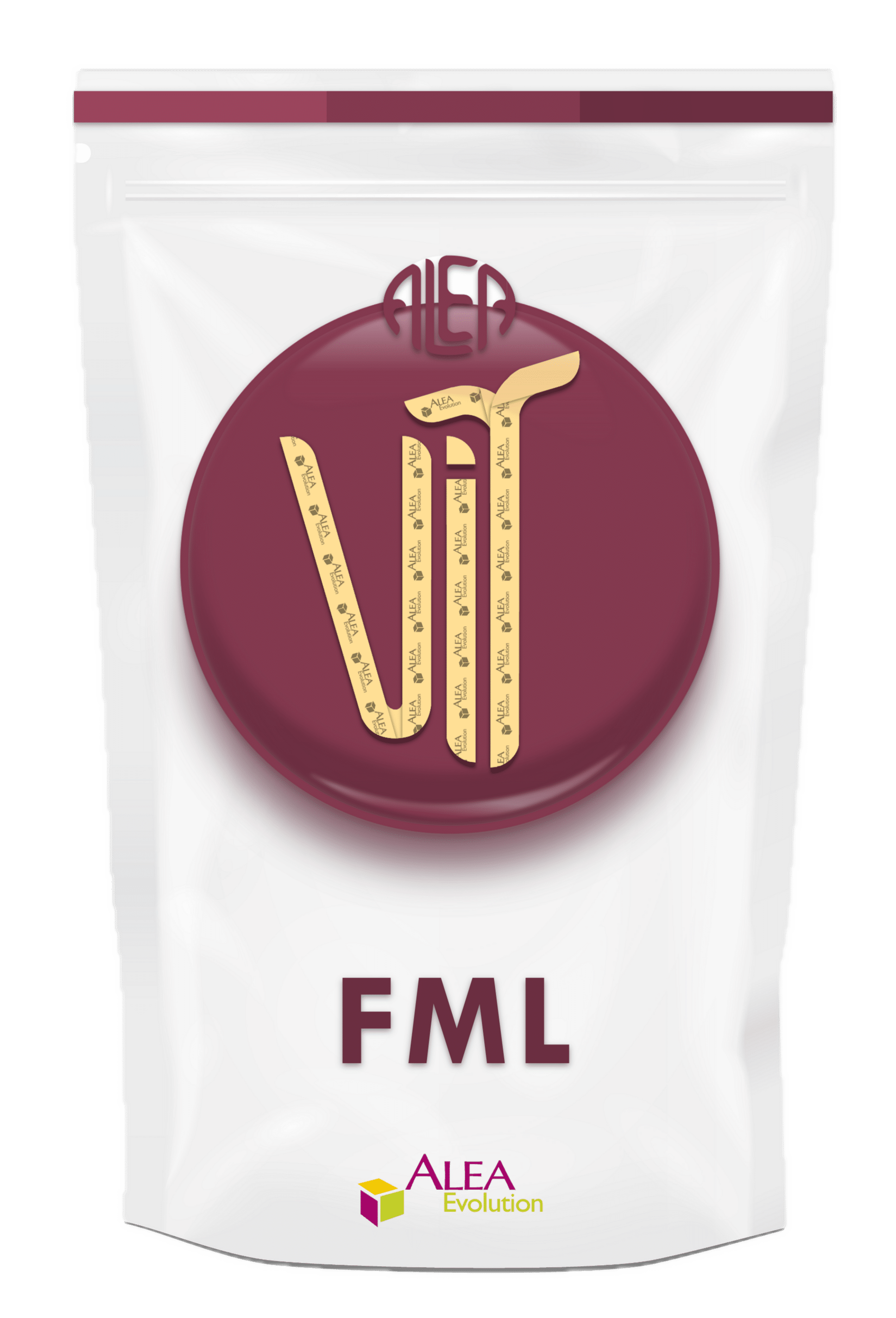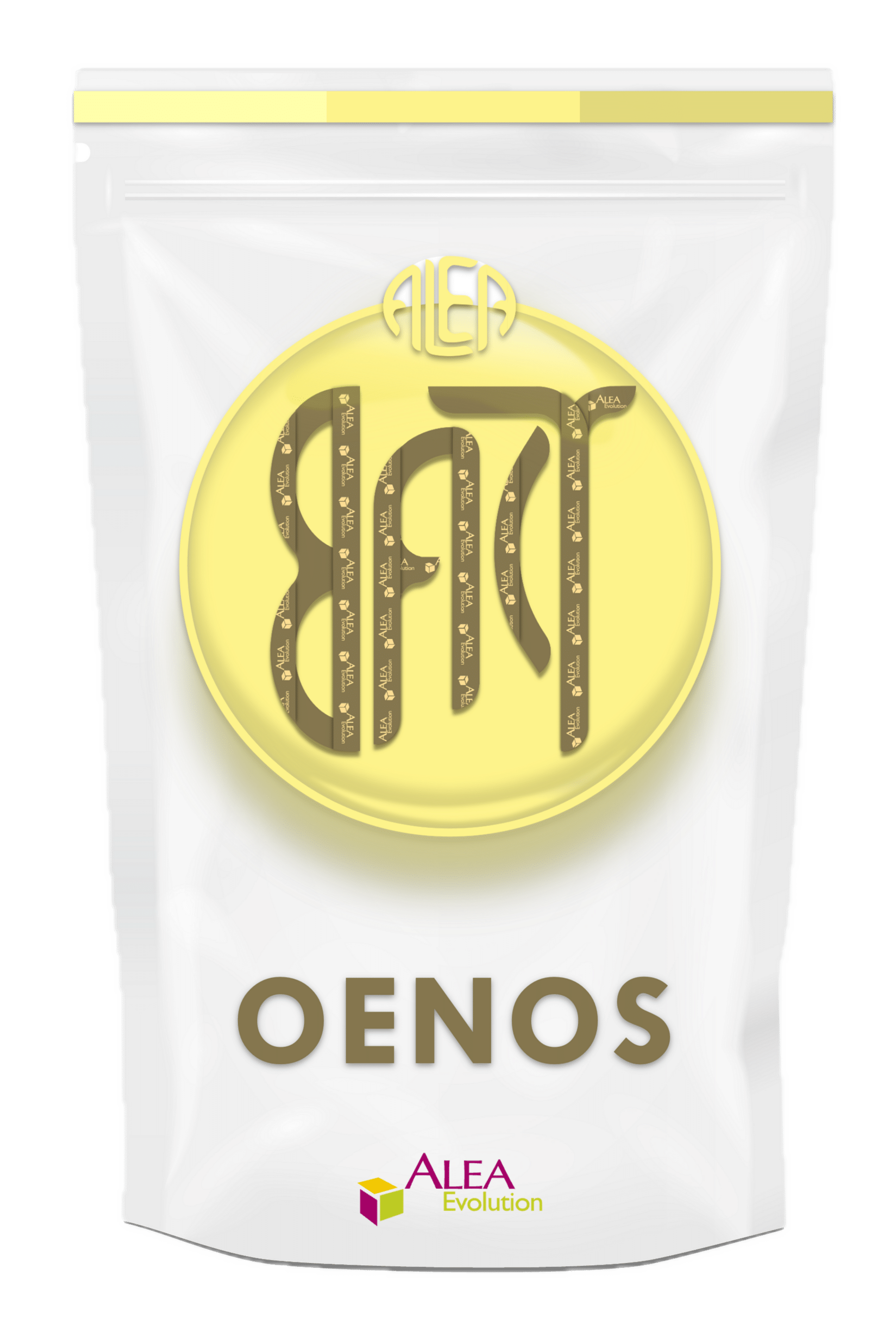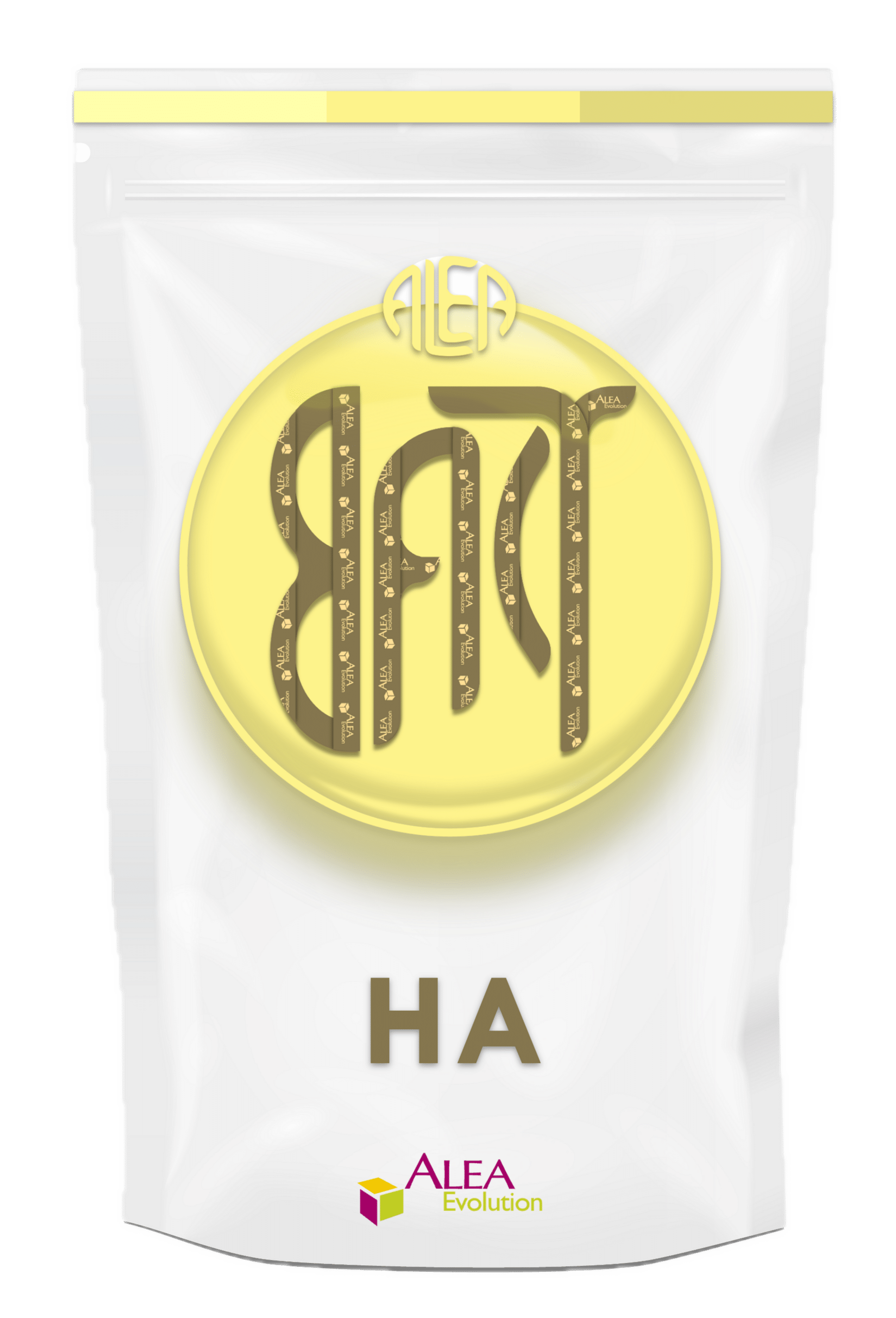Aleabacter FREEZE
POLVERE
Coltura fresca SURGELATA di Oenococcus oeni
ALEABACTER FREEZE è una coltura fresca surgelata di batteri Oenococcus oeni selezionati per una corretta gestione della fermentazione malolattica (FML) in mosti e vini.
Lo specifico ceppo batterico è stato selezionato per il massimo rispetto delle caratteristiche varietali e territoriali del vino.
Le caratteristiche di Aleabacter FREEZE garantiscono fermentazioni malolattiche sicure, complete e rapide con bassa produzione di acidità volatile, di ammine biogene, di diacetile (note burrate) e di altri aromi interferenti.
Parametri di utilizzo (NB: attenzione i parametri agiscono in maniera sinergica):
ALEABACTER FREEZE è consigliato per l’avvio della FML sia nei vini bianchi che nei rossi. L’utilizzo può avvenire:
-
con il classico inoculo sequenziale, al termine della fermentazione alcolica, dopo un primo travaso per l’eliminazione della feccia grossolana;
-
in co-inoculo dopo 24-48 h dall’inoculo dei lieviti selezionati su mosto. In co-inoculo è stato testato con risultati positivi con i seguenti lieviti della gamma Aleaferm: Reserve, Premium, 0-12, Easy, Arom.
Togliere la dose da utilizzare dal freezer -20°C e lasciarla a temperatura ambiente o meglio a bagnomaria in acqua a T° ambiente, per 15-20 minuti per favorire l’apertura e lo svuotamento del sacchetto surgelato. NON utilizzare acqua calda.
Sciogliere la dose di ALEABACTER FREEZE parzialmente scongelata in una piccola aliquota del vino o mosto da inoculare. NON agitare violentemente. NON apportare ossigeno.
Lasciare stemperare per 10-15 minuti quindi mescolare nuovamente prima di inoculare secondo le seguenti indicazioni:
CO-INOCULO:
-
Inoculare i batteri dopo 6-48 h dall’inoculo di lieviti Saccharomyces. Tempi brevi (6-12 ore) garantiscono un maggiore consumo di acido malico al termine della FA. Tempi maggiori (24-48 ore) sono invece necessari in caso di gradazioni alcoliche potenziali superiori a 14% vol. per ridurre lo shock osmotico dovuto alla concentrazione zuccherina.
-
Si consiglia di aggiungere ad una frazione del mosto da inoculare e lasciare acclimatare per 2-3 ore. Aggiungere la sospensione direttamente alla massa da trattare. In caso di macerazione effettuare l’aggiunta sotto cappello.
-
Non è necessario provvedere a rimontaggi o agitazioni in quanto la normale attività fermentativa è sufficiente ad omogeneizzare la coltura batterica.
-
Si consiglia di mantenere la temperatura di fermentazione inferiore a 28°C. In caso la temperatura superi i 30°C si avrà il blocco del consumo dell’acido malico, che riprenderà autonomamente alla discesa della temperatura nei range ottimali.
-
Si raccomanda il controllo analitico, possibilmente quotidiano, per verificare il corretto andamento delle fermentazioni.
Inoculo SEQUENZIALE al termine della FA:
-
Si consiglia di effettuare almeno un travaso per eliminare la feccia grossolana ed inoculare su vino pulito per limitare ulteriormente la formazione di acidità volatile e ridurre il rischio di deviazioni olfattive.
-
Si consiglia di aumentare il tempo di acclimatamento prima dell’inoculo portandolo a 6-12 ore (in ogni caso non superare le 24 ore) avendo cura di utilizzare un volume di vino sufficientemente elevato per consentire alla coltura batterica di non andare in stress competitivo considerata l’elevata concentrazione cellulare.
-
L’utilizzo dell’attivatore specifico Aleavit FML è consigliato in ogni caso, ma risulta fondamentale in caso di vini molto limpidi e in generale in caso di inoculo tardivo (es. la primavera successiva alla FA).
-
Non effettuare aggiunte di SO2 al termine della FA, prima dell’inoculo dei batteri e durante lo svolgimento della FML.
-
L’impiego in contemporanea di β-glucanasi non inficia il regolare svolgimento della FML.
-
Si raccomanda il controllo analitico della FML con analisi ogni 2-3 giorni. Non appena il valore residuo di ac. L-malico scende sotto 0,2-0,3 g/L si consiglia l’aggiunta di SO2 e/o il raffreddamento della massa a 8-10°C, per evitare il consumo dell’acido citrico con possibile produzione di acido acetico e diacetile.
Conta batteri totali: > 1 x 1011 U.F.C. / g
Muffe: < 1 x 103 U.F.C. / g
Lieviti: < 1 x 102 U.F.C. / g
Acetobatteri: < 1 x 103 U.F.C. / g
E. coli: assente
Salmonella: assente in 10 g
Listeria: assente in 25 g

